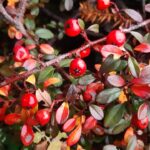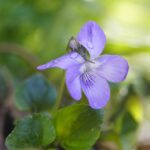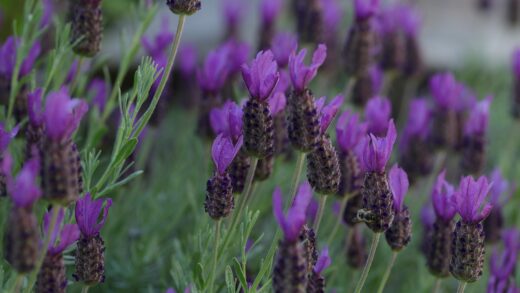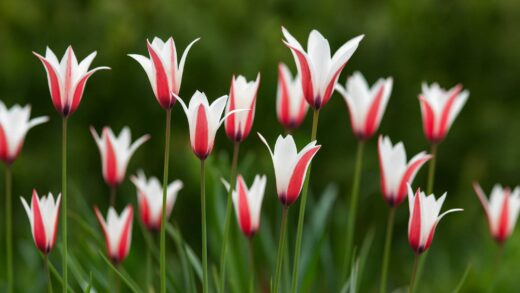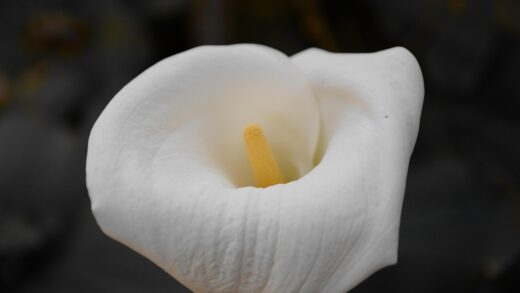Pruning is a fundamental horticultural practice that, for Brugmansia, is not merely about size control but is a vital tool for shaping the plant, enhancing its structural integrity, and, most importantly, stimulating the growth that leads to a profusion of its spectacular flowers. The angel’s trumpet blooms on new wood, so a thoughtful approach to trimming and cutting back encourages the development of a well-branched framework, which in turn creates more sites for flowers to form. Understanding when to prune, where to make the cuts, and the different goals of pruning throughout the year allows a gardener to transform a potentially gangly shrub into a well-proportioned and incredibly floriferous specimen, unlocking the plant’s full decorative potential.
The purpose of pruning
Pruning a Brugmansia serves several key objectives, all of which contribute to a healthier and more aesthetically pleasing plant. The most immediate goal for many gardeners is size and shape management. These plants can grow very large, very quickly, and regular pruning is essential to keep them within their allotted space, especially for container-grown specimens or those in smaller gardens. Pruning allows the gardener to sculpt the plant, whether the aim is to create a compact, bushy shrub or a more tree-like form with a single, clear trunk.
A second crucial purpose of pruning is to encourage a dense, well-branched structure. When a growing tip of a branch is cut, it removes the terminal bud, which produces hormones that suppress the growth of buds further down the stem. With the terminal bud gone, these lateral buds are stimulated to grow, resulting in multiple new branches forming where there was previously only one. This is the key to creating a fuller, bushier plant. Since Brugmansia flowers form on new growth, this multiplication of branches directly leads to a greater potential for blooms.
Improving the overall health of the plant is another vital function of pruning. This involves the removal of any wood that is dead, damaged, or showing signs of disease. Cutting out these compromised parts prevents the potential spread of pathogens and eliminates hiding spots for pests. Thinning out a crowded canopy by selectively removing crossing or rubbing branches also improves air circulation throughout the plant. This increased airflow helps the foliage to dry more quickly after rain or watering, significantly reducing the risk of fungal diseases like powdery mildew.
Finally, pruning can be used to rejuvenate an older, less vigorous plant. Over time, a Brugmansia can become woody and produce less impressive growth. A hard rejuvenation pruning, where a significant portion of the old wood is removed, can stimulate the plant to produce a flush of new, vigorous growth from its base or main framework, effectively giving it a new lease on life and restoring its flowering potential for seasons to come.
More articles on this topic
Understanding the growth habit
To prune a Brugmansia effectively, it is essential to understand its unique growth and flowering habit. A young plant will typically grow as a single, unbranched stalk. At a certain point in its maturity, this main stalk will fork, creating the first ‘Y’ in its structure. This is a critical milestone in the plant’s life, as all subsequent growth that emerges above this initial ‘Y’ is considered mature and is capable of producing flowers. Any growth or suckers that appear below this first ‘Y’ is juvenile and will not bloom.
This knowledge directly informs pruning decisions. It is crucial to preserve this main ‘Y’ and the woody framework that develops above it. If you prune the entire plant back below this first fork, you are essentially resetting it to a juvenile state, and it will need to grow a new main stalk and form a new ‘Y’ before it can flower again, which can significantly delay the blooming season. Therefore, routine pruning should always focus on the branches that have grown above this primary structure.
The fact that flowers are produced on “new wood” is the other key principle. This means that the blooms for the current season will form on the growth that has been produced in that same season. This is why pruning is so effective at increasing the floral display. By cutting back the branches, you are forcing the plant to produce a flush of new stems, and it is on these new stems that the flower buds will form. This is in contrast to some other shrubs that bloom on “old wood,” meaning they form their flower buds on the previous year’s growth and should only be pruned after they have flowered.
This growth habit means that you can be quite bold with your pruning without sacrificing the current season’s flowers, as long as you do it at the right time. Pruning in late winter or early spring, just before the new growth begins, will channel the plant’s stored energy into producing a multitude of new, flower-bearing shoots. This understanding of where and how the plant flowers is the foundation of an effective pruning strategy.
More articles on this topic
Timing the prune
The timing of your pruning activities is critical and depends on your specific goals. The main structural pruning, which involves significantly reducing the size and shaping the primary framework of the plant, is best done during its dormant period. For gardeners who bring their plants indoors for the winter, the ideal time is in the late autumn, just before moving the plant into storage. This makes the plant more compact and manageable for overwintering. Alternatively, a hard prune can be done in the very early spring, before new growth starts.
Pruning in late winter or early spring has the advantage of stimulating a powerful burst of new growth as soon as the weather warms up. The plant’s energy, stored in its roots over the winter, is directed entirely into the remaining buds, resulting in a vigorous and well-branched plant for the upcoming season. It is important to complete this type of pruning before the buds have begun to swell and break, to avoid wasting the plant’s energy.
Throughout the growing season, from late spring through summer, lighter pruning and trimming can be performed to maintain the plant’s shape and encourage continuous blooming. This can involve pinching back the soft growing tips of branches to encourage more side-shoots, or selectively trimming branches that are growing too long or are making the plant look untidy. Since it takes about a month or more for a new flower to develop after a branch is cut, you can use this knowledge to time your trimming to ensure a continuous display.
The one time to avoid major pruning is in the late summer or early autumn while the plant is still actively growing outdoors. Pruning at this time can stimulate a flush of new, tender growth that will not have time to harden off before the first frosts arrive. This soft growth is extremely susceptible to cold damage and can provide an entry point for disease as the plant heads into its dormancy, so it is best to allow the plant to slow down naturally at the end of the season.
Pruning techniques
When making any pruning cut, the quality of the cut is important for the plant’s health. Always use pruning tools that are sharp and clean. Sharp blades make a clean cut that heals quickly, while dull blades can crush the stem, creating a ragged wound that is more susceptible to disease. It is also good practice to disinfect your tools with alcohol or a bleach solution, especially when moving from one plant to another, to prevent the potential spread of pathogens.
For general pruning to encourage bushiness, trace a branch back from its tip and make a cut about half an inch above a node (the point on the stem where a leaf emerges). A new shoot, or multiple shoots, will then grow from that node. To control the plant’s size, you can cut branches back more severely, often by as much as two-thirds of their length, ensuring the cut is still made just above a node or a side branch. Always cut back to healthy, live wood.
To train a Brugmansia into a tree-like shape, often called a standard, the technique is slightly different. In this case, you would select a strong, straight central stem to be the trunk. All side branches and any suckers that grow from the base or along this main trunk are removed. This is continued until the trunk reaches the desired height, at which point you allow the top to form its first ‘Y’ and then branch out to create a canopy. This requires ongoing maintenance to remove any new growth that appears on the clear trunk.
Root pruning is another technique, used primarily for large, container-grown plants that you wish to keep in the same pot for multiple years. This is done in the spring before new growth starts. The plant is removed from its pot, and the outer layer of roots is trimmed back, often with a saw or sharp knife. The thickest roots can be cut back by as much as two-thirds. This stimulates new feeder root growth and allows you to repot the plant back into the same container with fresh potting mix.
Post-pruning care
After any significant pruning, the plant will benefit from some supportive care to help it recover and push out new growth. If the pruning was done in early spring to stimulate the growing season, this is the perfect time to provide the plant with its first dose of fertilizer. A balanced, water-soluble fertilizer will give the plant the immediate nutrients it needs to fuel the development of new shoots and leaves.
Watering is also key. Following a spring pruning, ensure the plant is watered thoroughly to help it get established for the season. As the new growth emerges, the plant’s water needs will increase significantly, so adjust your watering schedule accordingly to keep the soil consistently moist. The flush of new growth represents a significant output of resources for the plant, and it needs ample water to support this.
Monitor the plant closely in the weeks following a prune. Keep an eye out for the emergence of new growth from the nodes just below your cuts. This is the desired response. Also, be watchful for any signs of stress or disease at the pruning sites. While unlikely with clean cuts, it is always good practice to observe the plant’s response to the pruning.
The prunings themselves do not have to go to waste. The healthy, semi-hardwood pieces of stem that you have cut off are perfect material for propagation. These cuttings can be easily rooted in water or soil to create new plants, allowing you to multiply your collection or share with fellow gardeners. This turns a routine maintenance task into an opportunity to create more of these beautiful plants.









